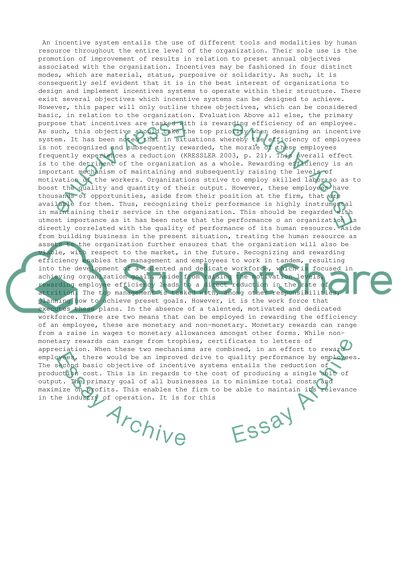Cite this document
(“Incentive systems Essay Example | Topics and Well Written Essays - 1500 words”, n.d.)
Incentive systems Essay Example | Topics and Well Written Essays - 1500 words. Retrieved from https://studentshare.org/management/1465953-incentive-systems
Incentive systems Essay Example | Topics and Well Written Essays - 1500 words. Retrieved from https://studentshare.org/management/1465953-incentive-systems
(Incentive Systems Essay Example | Topics and Well Written Essays - 1500 Words)
Incentive Systems Essay Example | Topics and Well Written Essays - 1500 Words. https://studentshare.org/management/1465953-incentive-systems.
Incentive Systems Essay Example | Topics and Well Written Essays - 1500 Words. https://studentshare.org/management/1465953-incentive-systems.
“Incentive Systems Essay Example | Topics and Well Written Essays - 1500 Words”, n.d. https://studentshare.org/management/1465953-incentive-systems.


